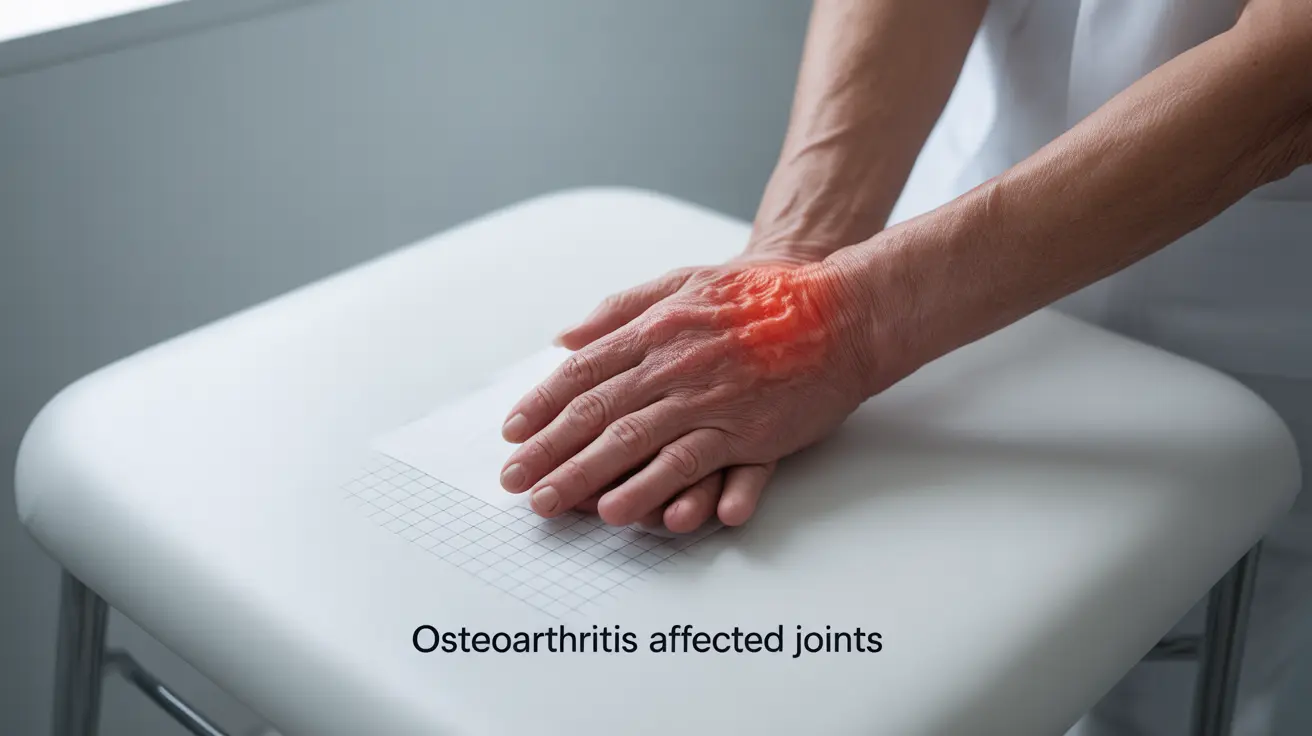Osteoarthritis is a common joint condition that affects millions of people worldwide, causing pain, stiffness, and reduced mobility. Recognizing the symptoms early and understanding how to manage them effectively can significantly impact your quality of life and help slow the progression of this chronic condition.
Whether you're experiencing early signs of osteoarthritis or caring for someone who is, this comprehensive guide will help you understand the symptoms, management strategies, and treatment options available.
Early Warning Signs of Osteoarthritis
The initial symptoms of osteoarthritis often develop gradually and may include:
- Joint stiffness, especially in the morning or after periods of inactivity
- Pain that worsens with activity or at the end of the day
- Clicking or crackling sounds when moving joints
- Reduced range of motion in affected joints
- Mild swelling around joint areas
These symptoms typically affect weight-bearing joints such as knees, hips, and the lower back, but can also occur in hands and other joints.
Common Causes and Risk Factors
Understanding what contributes to osteoarthritis can help you better manage and potentially prevent its progression:
- Age (risk increases after 45)
- Previous joint injuries or trauma
- Excess body weight
- Repetitive joint stress from work or sports
- Family history of osteoarthritis
- Gender (more common in women)
Daily Management Strategies
Pain Management Techniques
Several approaches can help manage osteoarthritis pain effectively:
- Hot and cold therapy
- Gentle stretching exercises
- Weight management
- Activity modification
- Proper posture and body mechanics
- Supportive footwear and assistive devices when needed
Exercise and Physical Activity
Regular physical activity is crucial for managing osteoarthritis symptoms. Beneficial exercises include:
- Low-impact aerobic activities (swimming, cycling)
- Strength training for muscle support
- Range-of-motion exercises
- Balance and flexibility work
- Water-based exercises
Treatment Options
A comprehensive treatment plan often includes multiple approaches:
Non-Medication Treatments
- Physical therapy
- Occupational therapy
- Weight loss programs if needed
- Acupuncture
- Massage therapy
Medication Options
- Over-the-counter pain relievers
- Topical treatments
- Prescription medications when necessary
- Joint injections for severe cases
Prevention and Long-term Management
Taking proactive steps can help prevent osteoarthritis from worsening:
- Maintain a healthy weight
- Practice joint protection techniques
- Stay physically active within your limits
- Choose low-impact activities
- Get regular medical check-ups
Frequently Asked Questions
- What are the early signs and symptoms of osteoarthritis in the knees?
Early knee osteoarthritis symptoms include morning stiffness lasting less than 30 minutes, pain that worsens with activity, swelling after extended activity, and a creaking or grinding sensation when moving the knee.
- How can I manage osteoarthritis pain and stiffness on a daily basis?
Daily management includes regular gentle exercise, maintaining a healthy weight, using hot/cold therapy, practicing good posture, and taking prescribed medications as directed by your healthcare provider.
- What are the common causes and risk factors for developing osteoarthritis?
Common risk factors include advancing age, obesity, previous joint injuries, genetics, repetitive joint stress, and being female. Some risk factors like weight and activity levels can be modified to reduce risk.
- Can osteoarthritis be treated with exercise alone, or are medications necessary?
While exercise is a crucial component of treatment, most people benefit from a combination approach that includes both exercise and appropriate medications. The specific treatment plan should be tailored to individual needs and severity of symptoms.
- How can I prevent osteoarthritis from worsening over time?
Prevention strategies include maintaining a healthy weight, staying physically active, protecting joints during activities, using proper body mechanics, and working with healthcare providers to manage symptoms early.




